I wrote this glossary with photos to explain some of the words and expressions which appear frequently in the stories. It’s not meant to be an extract of a PNG Pidgin – English dictionary, but to give a little bit of context related to the environment where I collected the folk tales.
Bilum – means bag or sac. Traditionally it’s a string bag made of plants’ fibres. It’s almost an extension of a Papuan’s body, everybody, everywhere, uses one. There are big ones, used to carry children or bring food from the forest, tiny ones used for the mobile phone or betel nuts, bilums for daily usage or for performing sacred rituals, warrior’s bilums decorated with black feathers, to protect them from arrows and trick the enemy, offerings bilum adorned with kina shells, and so. Some tribes can be identified by the design of their bilum. Along with the kundu drum, it’s a symbol of PNG.
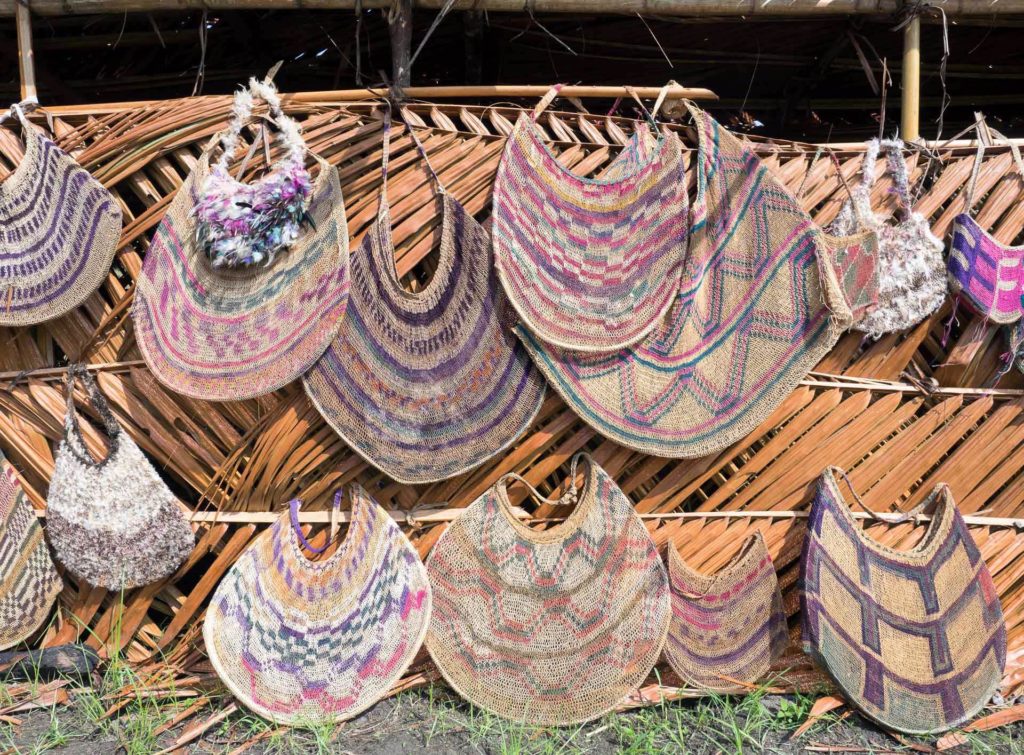
Garamut – is a hardwood tree or a drum carved in a 1 to 5 meters long garamut trunk. The garamut (drum) is used to communicate to neighbouring houses and communities, and to keep the singsing rhythm. The garamut can have magic powers, as a masalai–garamut or an ancestor’s garamut, and makes part of the local mythology.
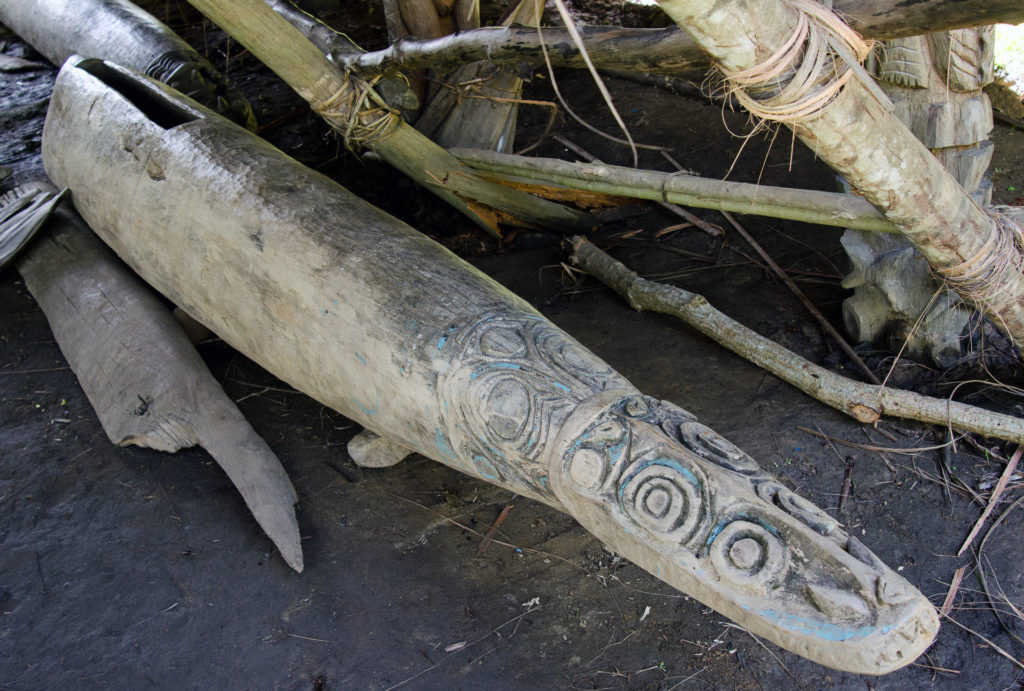
Haus tambaran or haus boy – is the ceremony/cult house, also called spirits’ house, or warriors’ house. It’s a powerful place, the gathering of male ancestors’ spirits. Its pillars, crossbars, ceiling and walls can be carved and painted with appearances of myth characters and sacred motifs. Traditionally only the initiated men are allowed inside, where they find strength and guidance, perform rituals, debate, chill and share stories. A tambaran belongs to one or more clans, which claim paternity over the ritual artefacts. Kaipuk, a Kwoma “big man”, told me “the tambaran is a mask of the clan”.

Kina – it can refer to a particular species of a seashell, or to different shells stitched on a cloth or belt, used as money. Kina are still used for custom payments (bride price, compensation) for sorcerers’ fees and offerings. Kina was adopted as the name of the PNG currency.

Kundu – is a drum, similar to a djembe, carved in a log and closed to one side with lizard skin. It is the most common drum used in New Guinea. It’s always part of a singing and, like the garamut, it can have magic powers, and it can be used to perform sorcery.

Limbun – is a palm tree. It can refer to almost everything made from it. The bark is used as/for containers, covers, washing gutter or sleeping mats. The limbun’s hardwood is used to make tools, handlers and weapons.

Mark the day/number of – The indigenous didn’t know the numeric system. They used to show, or represent the numbers/quantity by tying knots on a bush-rope, braking a stick into pieces or breaking the leaves off a branch. In the Kwoma language, there are words only for “one” and “two”. You can say “two one” meaning three, or “two-two” for four, or “one hand” for five, but bigger numbers have to be shown or described. Others were using body parts: hand, elbow, knee, neck…
To keep in mind a date, like a market day, they would make knots on a thread, and every day they would untie a knot until the meeting day. If one would have to bring fruits for a group of 8 let’s say, he/she would break a stick into pieces, associating each one to a person name, and make sure there’s a fruit for each stick. Or, to check if the number of boys from a village matches the number of girls from another one, they would break a stick for each boy, with his name, and a stick with each girl name, align the sticks in two rows, face to face. Nowadays, this counting can still be used in remote communities, even for money sharing.

Masalai or spirit – is a mighty creature/person who can take different appearances, as man, woman, animal, plant, fruit or stone, and it can become invisible too. They have all sorts of powers and are good at sorcery and spells. Good or bad, both are feared and thus respected. They can belong to a clan or can be part of the environment. Even if they can be defeated, they rarely get killed. Often, a clans’ ancestor is a masalai/spirit.
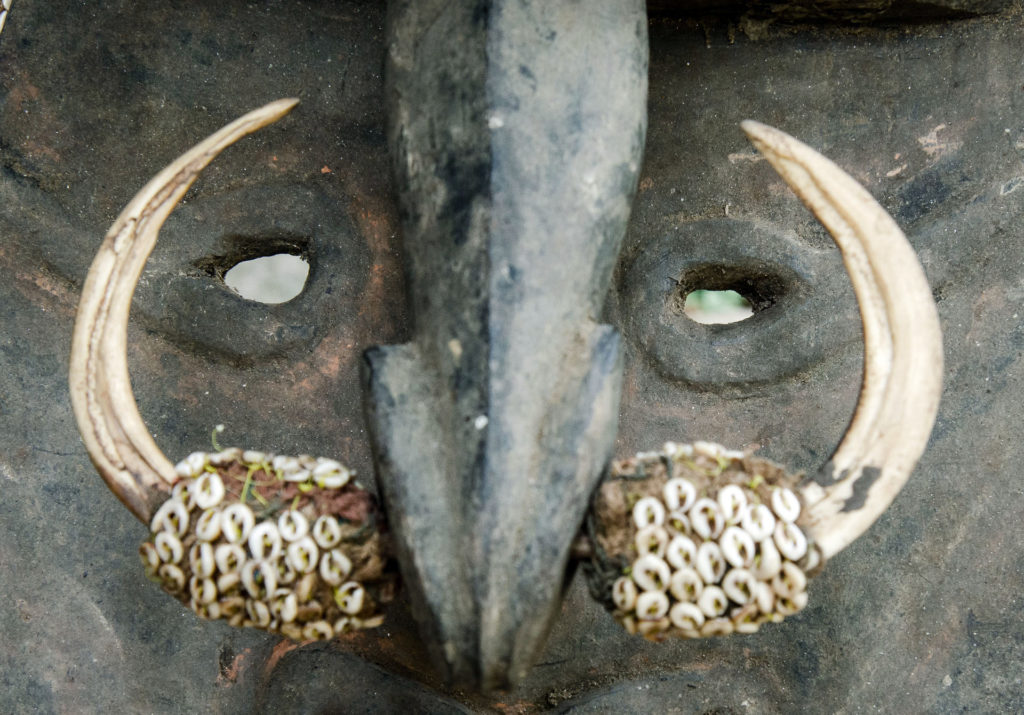
Mauswind – means sorcery, spell, witchcraft. Wokin mauswind – to make a spell/sorcery/witchcraft. Usually is performed by blowing, exhaling, breathing out. A spell can be sent or pulled out (removed) by blowing it or by breathing it in or out.
Morota – sago leaves stitched together along a bamboo slat, forming panels used to make roofs and fences. It can also mean “roof”, or “shelter” made from morota.

Mumu – cooking/steaming using hot stones. The stones are well heated on the fire, then, a layer of hot stones is spread on the fire pit, the stuff to be cooked is placed on top and covered with another layer of hot stones. Everything is covered with big leaves and limbun. When a big animal like a pig is cooked, hot stones are put inside the body too. When they cook veggies like sweet potatoes, breadfruits, or pandanus fruits, a thick layer of leaves is lied between the stones and the veggies, so they don’t dry. In swampy areas, like the flooded plains along the Sepik, you can’t find stones, and people carry them from camp to camp. Until about 40-50 years ago, this cooking method was used, rarely though, for humans too.
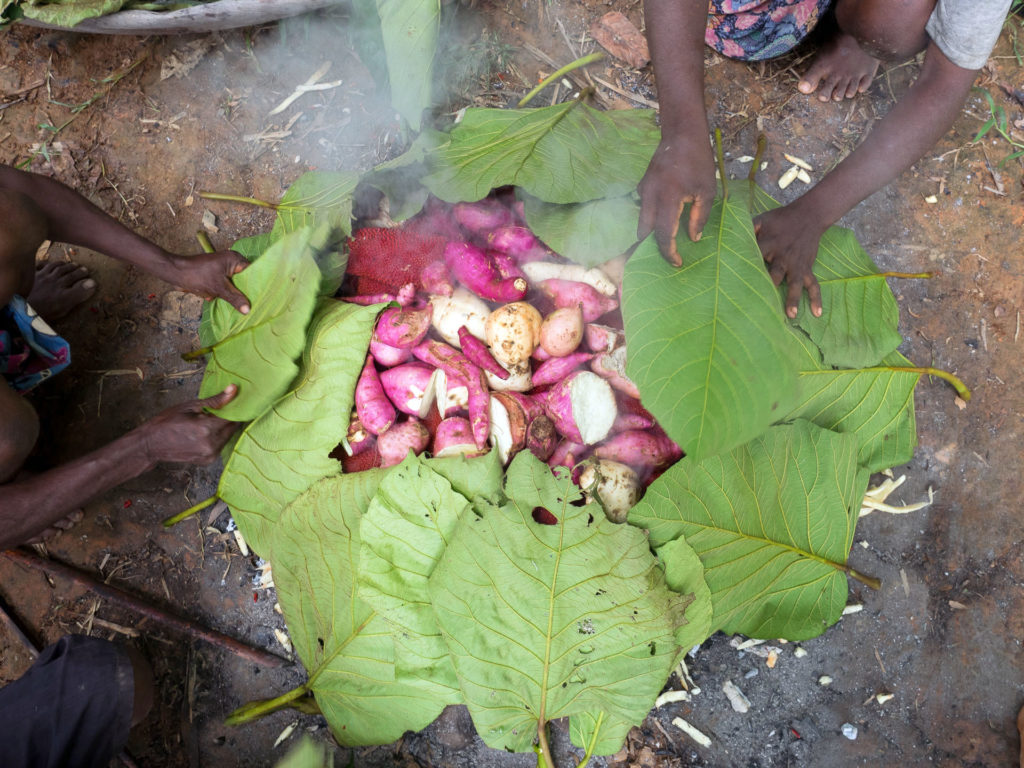
Sago – is a palm from which is obtained a starch, the staple food for lowlands Melanesians. The palm’s core is scrubbed/grinded, washed, squeezed and the water is decanted to get the starch. The sago flour can be backed wrapped in leaves, or mixed with hot water, or pan-fried, to get something tasteless and difficult to swallow. I found it tasting terrible, and that’s what people there eat, even three times a day.
From the sago leaves is made the morota. From their petiole are made the house walls. And the bark it’s used as a gutter for washing the sago. Some sago palms are cut down and left for flies to lay eggs, to form the sago grubs. The fat grubs are the only “animals” grown by Melanesians, the rest they hunt for. Every part of the sago palm is used, people’s lives depend on it, and around all the lowlands settlements can be found sago swamps.
Now, the palm oil plantations are clearing the forests and drying the ground, and the chemical fertilizers used are ending up in the water streams. Slowly and irreversible, the Melanesians are losing their staple food.
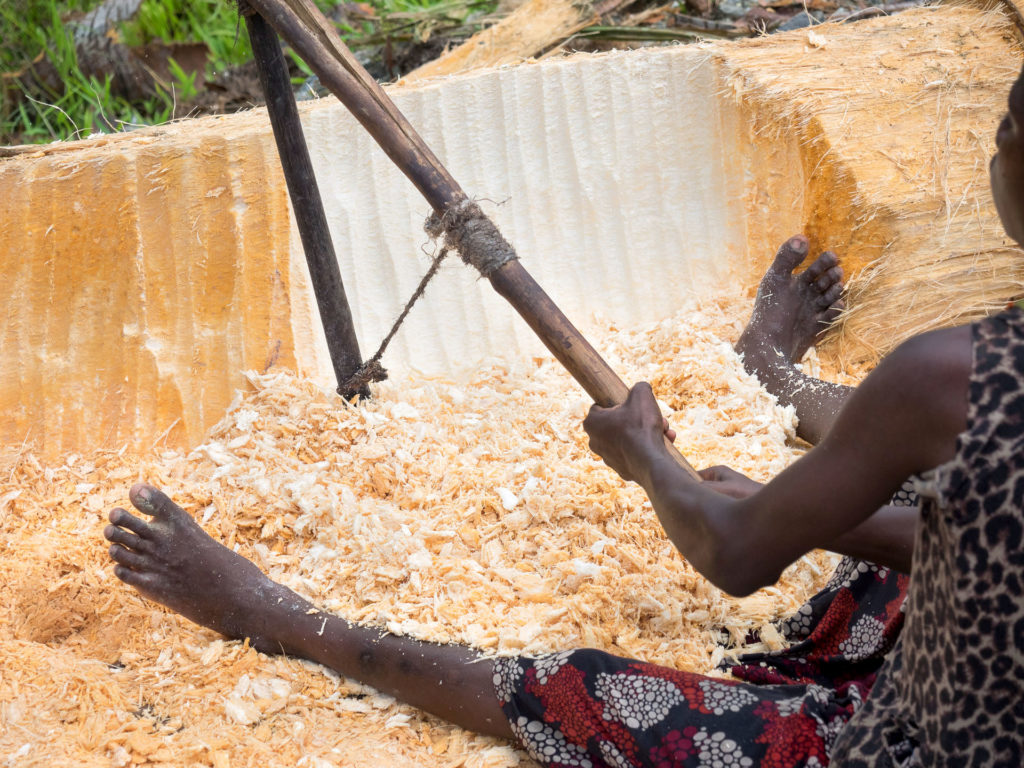
Sanguma or saveman – sorcerer, witch doctor, shaman, savvy man. In PNG they are found everywhere, most people have strong beliefs in them, regardless of their religious beliefs, education and social status. Appealing to their services, as well as trials for sorcery is common, both in rural and urban areas. Along the Sepik, the sanguma use small-small arrows to send the spell to/into a person. A sanguma arrow, or its’ effect, can be seen and removed only by another sanguma. These services cost, and now, more and more people, particularly in the communities which are more into the Christian religion, suspect the sanguma of scamming.
Shell-kembang or koteka – is a penis gsheats, used in many Melanesians communities. It can be made of: gourd, shell, bird beak, wood, leaf. It’s a symbol of masculinity, a decoration and can be also used to perform magic.
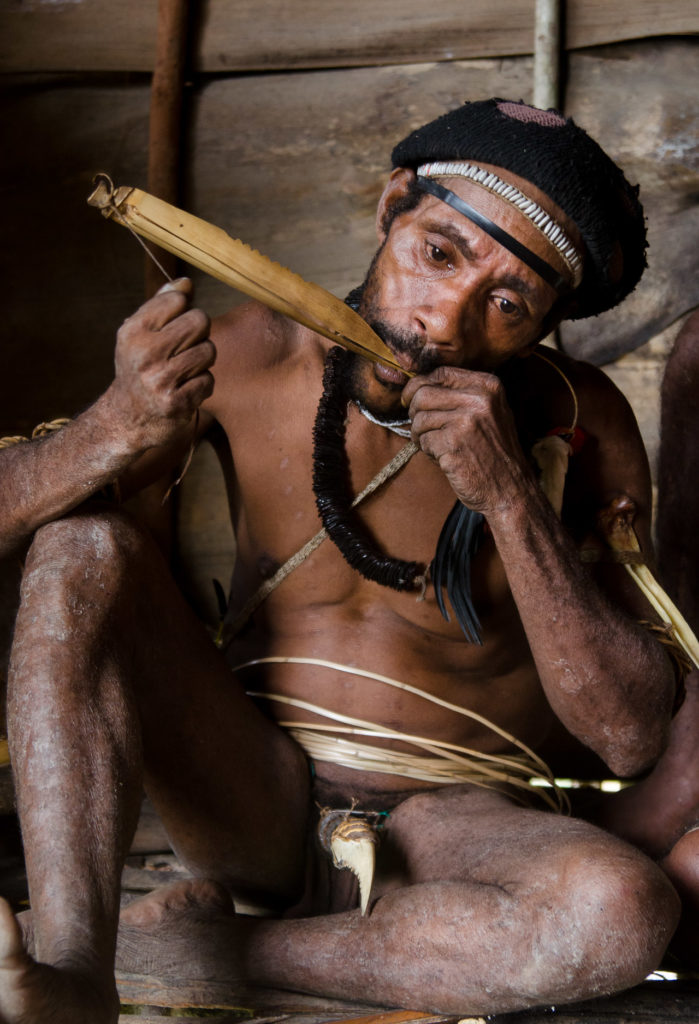
Singsing – is a ceremony or celebration. The community invokes the ancestors’ spirits by telling their stories, singing and dancing. The stories can be myths and legends, or accounts of recent events, like a tribal fight.
Singsing also refers to the chorus (refrain) of a story and its’ rhythm of kundu drums and garamut. The long stories can be structured in a few acts having e a few choruses. When one act ends, the rhythm changes for the following one.
Singsing can also mean witchcraft or spell.
Singsing amamas – means happy singsing, a party.
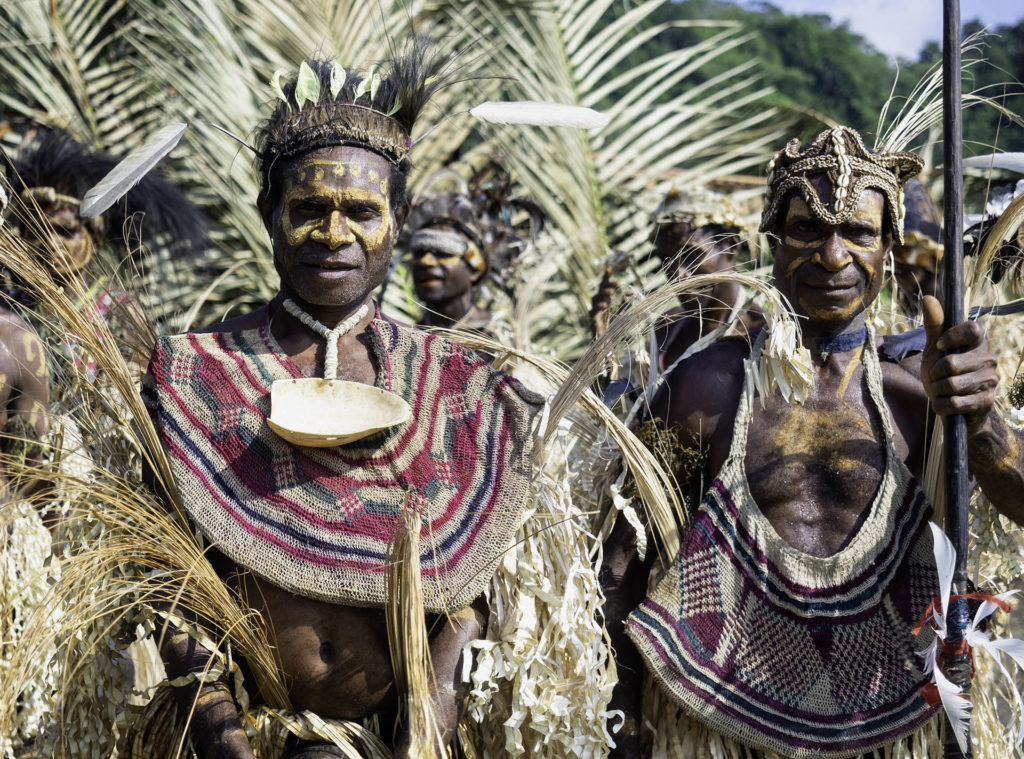
Tumbuna story – ancestral myths and legends. They used to be reserved only for the initiated men. As times are changing, this secrecy is relative now.
When I recorded tumbuna stories transcending a clan’s boundaries, a group of men, one from each clan included in the story, was formed. As the epic passed from one clan to another, the same did the storytelling.
Besides the tumbuna stories, there are the so-called “just stories” open to everybody.
Umben – is a fishnet basket. The net of knotted yarns, usually made of tulip-tree fibres, is attached to a ring made of rattan or a similar vine. Catching fish with the umben is women’s work. Men spear the fish.
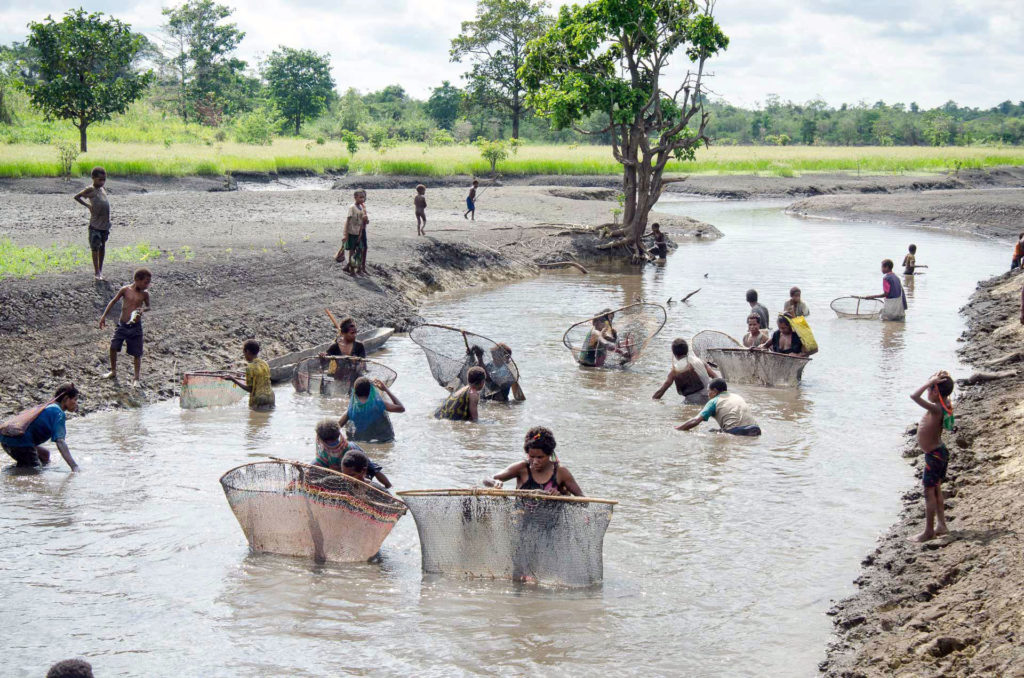
Waspor – is a generic character name used in some Kwoma stories, meaning “one man”, without name and origin.
Bellow there are more captioned photos for the glossary.

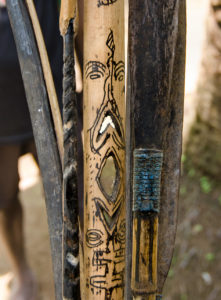
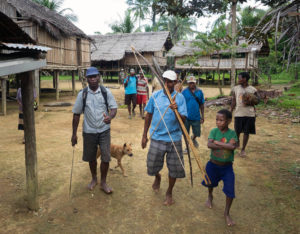
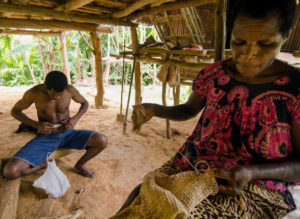





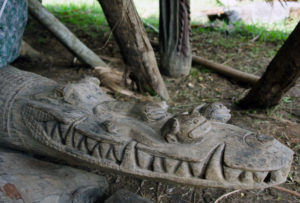

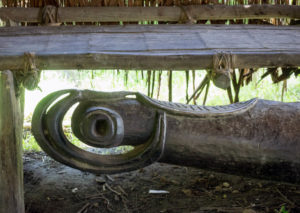
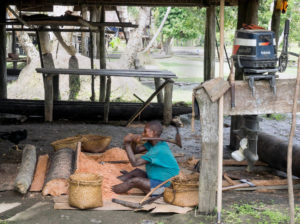
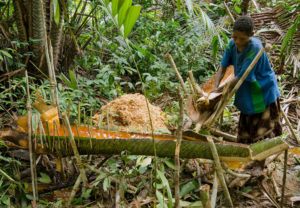
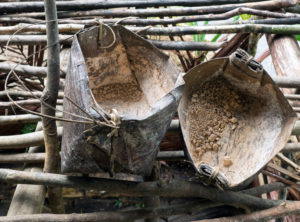

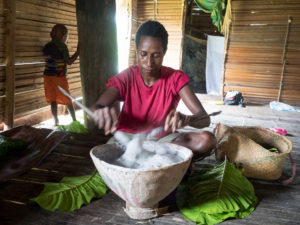







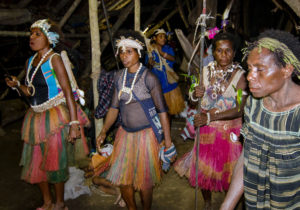

Hello Sir/Madam sorry for disturbing you please may you send me a full .pdf document for the purpose and insight meaning of the Traditional Ambelam bilum
Hi,
only now I saw your message.
I don’t have a pdf on this topic, but i can provide information, or put you in contact with people fro PNG… Let me know. You can e-mail dragos.dubina@gmail.com, or FB Dragos Dubina